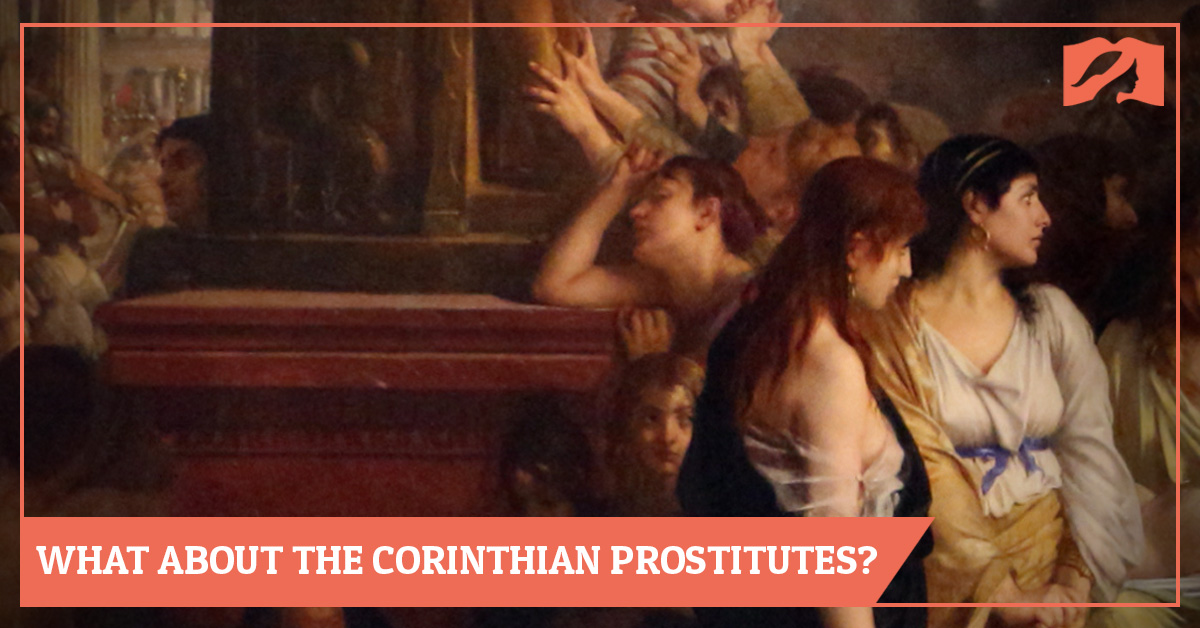Is Head Covering Cultural? What about the Corinthian Prostitutes?

While looking at the culture of the time can often be helpful, it becomes dangerous when we start assigning reasons for a command that are different than what the author gives.
R.C. Sproul says, “If Paul merely told women in Corinth to cover their heads and gave no rationale for such instruction, we would be strongly inclined to supply it via our cultural knowledge. In this case, however, Paul provides a rationale which is based on an appeal to creation not to the custom of Corinthian harlots.” 1) R.C Sproul – Knowing Scripture, 1977, ch 5, pg 110. He goes on to say, “We must be careful not to let our zeal for knowledge of the culture obscure what is actually said.” 2) R.C Sproul – Knowing Scripture, 1977, ch 5, pg 110.
In 1 Corinthians 11 Paul appeals to the creation order, nature’s witness and angels, all which transcend culture. He tells us that head covering is a part of official apostolic teaching and is the practice of all churches, everywhere. So that means a local situation in Corinth cannot explain head covering since it was the standard practice outside of Corinth as well. Earlier in Paul’s letter when he had a command that was due to the situation at the time, he mentioned it. He recommended not to marry “in view of the present distress” (1 Cor 7:26). Paul could have done the same with head coverings, but he didn’t because what was happening at the time wasn’t the reason for the command. Additionally, the fact that he commands men to remove their coverings (1 Cor 11:4) in the same sentence cannot be explained by a situation that deals only with women.
1000 Cult Prostitutes
In addition to exegetical grounds, there are also good historical reasons for rejecting a cultural explanation of head covering. The most appealed to reference in support of this position is the 1000 cult prostitutes at the temple of Aphrodite in Corinth.
Before we examine that claim, we’re in need of a brief history lesson on the city of Corinth. Dirk Jongkind (PhD, Cambridge University) says “The City of Corinth had a glorious Hellenic past before its destruction by the Romans in 146 bc. Yet when it was refounded in 44 bc, it was not rebuilt as a Greek city, but as a Roman colony.” 3) Dirk Jongkind – Corinth In The First Century AD: The Search For Another Class, Tyndale Bulletin 52.1, page 139 So Greek Corinth had been destroyed and it was rebuilt 100 years later as a Roman colony.
The primary source quoted to learn about these cult prostitutes is the Greek geographer Strabo (64/63 BC – 24AD). Strabo travelled widely and recorded what he saw in his work “Geographica”. Here’s what he said, “And the temple of Aphrodite was so rich that it owned more than a thousand temple slaves, courtesans, whom both men and women had dedicated to the goddess.” 4) Strabo – Geographica – Book 8, Chapter 6 Take note of the past tense of the quote. Strabo wrote this about 30 years before Paul wrote 1 Corinthians and he was referring not to his present time, but to ancient times in Corinth’s past. He later stated, “The city of the Corinthians, then, was always great and wealthy”.5) Strabo – Geographica – Book 8, Chapter 6 The key words are “then” and “was”. In sharp contrast, in his day he saw on the summit “a small temple of Aphrodite” 6) Strabo – Geographica – Book 8, Chapter 6 not the “temple of Aphrodite [that] was so rich that it owned more than a thousand temple slaves…”. 7) Strabo – Geographica – Book 8, Chapter 6
David W. J. Gill (PhD, University of Oxford) writing on “The Importance of Roman Portraiture for Head-Coverings in 1 Corinthians 11:2-16” says:
Some have taken the urge for women to wear veils as Paul ensuring that they were not mistaken for prostitutes or hetairai. Part of the reason for this view lies in the interpretation of Corinth as a ‘sex-obsessed’ city with prostitutes freely roaming the street. The 1000 hetairai linked to the cult of Aphrodite, and the corresponding notoriety of Corinth, belong to the hellenistic city swept away by Mummius in 146BC. In contrast, the Roman shrine was far more modest… 8) David W. J. Gill – The Importance of Roman Portraiture for Head-Coverings in 1 Corinthians 11:2-16, Tyndale Bulletin 41.2
Dr. Gill agrees that Corinth did have a wild sex-obsessed reputation and 1000 cult prostitutes in the temple of Aphrodite. However, that belonged to Greek Corinth which was destroyed about 200 years before Paul wrote 1 Corinthians.
Mistaken Identity
Going hand-in-hand with this view is the claim that if women were seen uncovered, they’d be mistakenly identified as a prostitute. However, this claim is unfounded and there’s good reason to suggest that wasn’t the case. Dr. Gill explains:
Public marble portraits of women at Corinth, presumably members of wealthy and prestigious families are most frequently shown bare-headed. This would suggest that it was socially acceptable in a Roman colony for women to be seen bare-headed in public. 9) David W. J. Gill – The Importance of Roman Portraiture for Head-Coverings in 1 Corinthians 11:2-16, Tyndale Bulletin 41.2
As he points out, the archaeological evidence supports the fact that is was normal for women be seen bare-headed. This isn’t an isolated piece of evidence but what is “most frequently shown”.
What About Men?
Since the Apostle Paul also commands men to remove their head covering when praying or prophesying (1 Cor 11:4) let’s also see if men having something on their heads would be culturally out-of-step. Richard E. Oster, Jr. (PhD, Princeton Theological Seminary) writing on the “Use, Misuse and Neglect of Archaeological Evidence in Some Modern Works on 1 Corinthians” says:
This Roman custom [of male liturgical head covering] can be documented for several generations before and after the advent of Christianity in Corinth. This custom is clearly portrayed on coins, statues, and architectural monuments from around the Mediterranean Basin. 10) Richard E. Oster, Jr. – Use, Misuse and Neglect of Archaeological Evidence in Some Modern Works on 1 Corinthians
Dr. Oster is saying that men covering their heads during this time in (non-Christian) worship has strong archaeological support. Since Paul instructs the men to go against a common cultural practice, a cultural explanation cannot be accepted. Dr. Oster then summarizes:
…the practice of men covering their heads in the context of prayer and prophecy was a common pattern of Roman piety and widespread during the late Republic and early Empire. Since Corinth was itself a Roman colony, there should be little doubt that this aspect of Roman religious practice deserves greater attention by commentators than it has received. 11) Richard E. Oster, Jr. – Use, Misuse and Neglect of Archaeological Evidence in Some Modern Works on 1 Corinthians
Conclusion
Paul doesn’t leave us in-the-dark as to why women are to cover their heads and men are to refrain. The fact that he says, “For this reason” (1 Cor 11:10 NKJV) means the answer will be found in exegesis, not cultural analysis. Having said that, when we do examine Roman cultural practices in that day we see that: 1) men did cover their heads in non-Christian worship and 2) women being seen without a covering was not an outrage or an association with prostitution. Since cultural arguments for head covering must ignore Paul’s own explanation, they should be discarded.
References
- The Head Covering Movement’s New Direction: A Call for Team Members - July 11, 2025
- Is Head Covering Related to Spiritual Gifts? A Response to Barry York - July 5, 2023
- A Husband’s Authority is Limited (He is Not Pastor or King) - November 14, 2022



